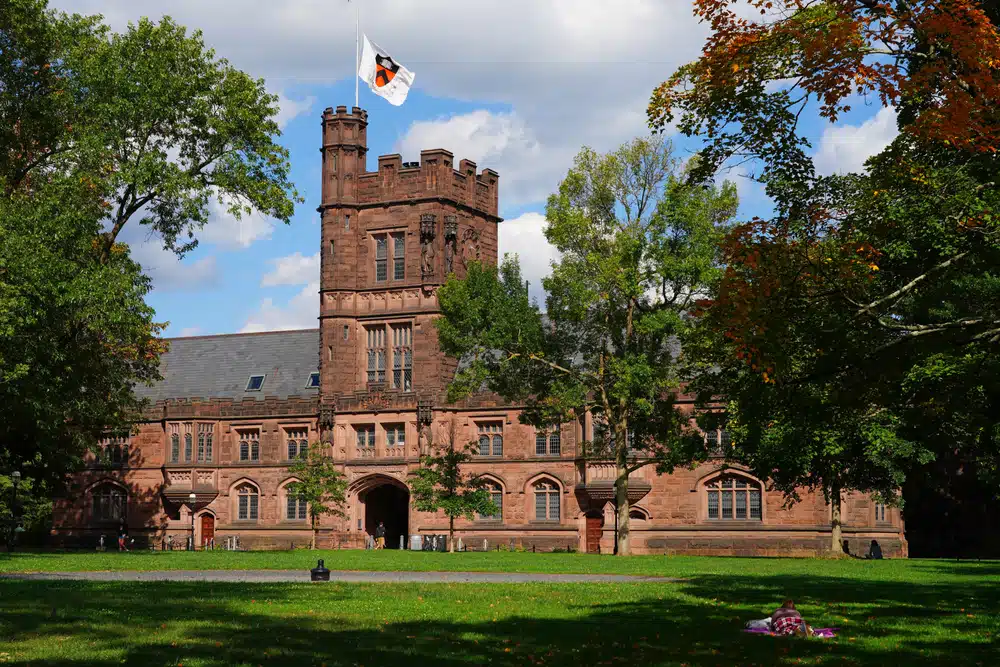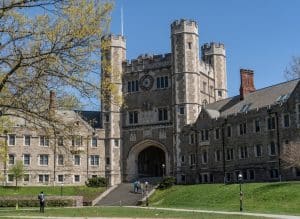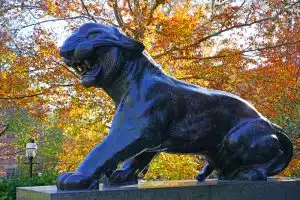How Big Is Princeton University?
Princeton University, located in Princeton, New Jersey, is one of the most prestigious educational institutions in the United States. This article examines the size and scale of Princeton University, examining various aspects such as size and student population.
Understanding the Size of Princeton University
When discussing the size of Princeton University, it is essential to consider different factors. These factors include the physical size of the campus and buildings, the student population (both undergraduate and graduate), and the number of faculty and staff members. Breaking down these aspects will give us a comprehensive understanding of the scale of Princeton University.
Physical Size: Campus and Buildings
Princeton University’s campus covers approximately 600 acres, making it one of the largest university campuses in the Ivy League. The vast expanse of land provides ample space for various academic, research, and recreational facilities.
The campus is known for its picturesque setting, Gothic-style architecture, beautiful gardens, and tree-lined walkways. Walking through the campus feels like stepping into a historical masterpiece, each building telling a unique story.
The university’s iconic buildings, such as Nassau Hall, which dates back to 1756, add to the historical charm of the campus. With its imposing facade and rich history, Nassau Hall symbolizes Princeton University’s legacy and commitment to academic excellence. Inside its walls, countless lectures, discussions, and debates have taken place, shaping the minds of generations of students.
In addition to the main campus, Princeton University has several satellite locations, including the Princeton Plasma Physics Laboratory and the Princeton Forrestal Campus. These satellite locations are dedicated to specific areas of research and academic pursuits. The Princeton Plasma Physics Laboratory, for example, is a world-renowned center for fusion energy research, attracting scientists and scholars from around the globe.
Student Population: Undergraduate and Graduate
Princeton University has a relatively small student population compared to other universities, with around 5,300 students. This number includes both undergraduate and graduate students. The undergraduate enrollment is approximately 5,200, while the remaining 100 students pursue various graduate programs.
Despite its smaller size, Princeton University prides itself on its commitment to providing a close-knit, intimate learning environment. The smaller student population allows for more personalized attention from professors and fosters a sense of community among students. The residential college system further enhances this tight-knit community, where students live and learn together, forming lasting friendships and intellectual connections.
Faculty and Staff Numbers
Princeton University boasts a talented and diverse faculty, with more than 1,100 full-time professors. These professors are experts in their respective fields, dedicated to providing a world-class education to the university’s students. They bring a wealth of knowledge and experience to the classroom, engaging students in thought-provoking discussions and challenging them to think critically.
Additionally, Princeton University employs a significant number of administrative and support staff to ensure the smooth functioning of the institution. From librarians and research assistants to maintenance workers and IT professionals, each staff member plays a crucial role in supporting the university’s mission of excellence in teaching and research.
Together, the faculty and staff at Princeton University create a vibrant intellectual community, fostering a culture of innovation, collaboration, and academic rigor. Their dedication and passion contribute to the overall success and reputation of the university.
Breaking Down the Campus Size
Princeton University’s campus can be further understood by dividing it into distinct areas, such as the main campus and different residential and academic facilities.
When exploring the main campus of Princeton University, one cannot help but marvel at the architectural beauty and historical significance of its buildings. The iconic Nassau Hall stands tall, exuding a sense of grandeur and tradition.
Walking through the main campus, you will come across numerous department-specific buildings, each housing a wealth of knowledge and expertise. These buildings are the epicenter of intellectual exploration, where students and faculty engage in lively discussions and groundbreaking research.
Libraries are integral to any academic institution, and Princeton University is no exception. The campus boasts a multitude of libraries, each housing an extensive collection of books, journals, and digital resources. From the Firestone Library, the main research library, to specialized libraries catering to specific subjects, such as the Marquand Library for art and archaeology, students can access many resources to support their academic pursuits.
Research is at the heart of Princeton University’s mission, and the campus is equipped with cutting-edge laboratories and research centers. These state-of-the-art facilities provide students and faculty with the tools and resources necessary to push the boundaries of knowledge. Whether it’s a biology lab buzzing with microscopes and Petri dishes or a physics lab filled with intricate experiments, the academic and research facilities at Princeton University foster an environment of innovation and discovery.
While the main campus is undoubtedly the hub of academic and administrative activities, Princeton University extends its reach beyond its boundaries. The university has satellite locations strategically positioned to support specific research and focus areas. These satellite locations serve as incubators for collaboration and innovation, providing students and faculty with additional resources and opportunities to explore their passions outside the main campus environment.
Princeton University’s commitment to fostering a close-knit community is evident in its residential college system. The campus features several residential colleges, each with a unique culture and identity. These residential colleges serve as more than just dormitories; they are vibrant communities where students form lifelong friendships, engage in intellectual discussions, and participate in various extracurricular activities. Living in a residential college allows students to immerse themselves fully in the Princeton experience and create lasting memories.
While the residential colleges cater to the undergraduate population, Princeton University also recognizes the importance of providing suitable housing options for its graduate students. The university offers a diverse range of housing options on and off-campus to meet its graduate population’s specific needs and preferences. From apartments and townhouses to shared houses, graduate students can choose a living arrangement that suits their lifestyle and academic requirements.
Analyzing the Student Body
Understanding the student population at Princeton University is crucial in assessing its size and scale. Princeton University has a rich and diverse student body comprising undergraduate and graduate students worldwide. Let’s take a closer look at the enrollment statistics for both undergraduate and graduate programs.
Undergraduate Enrollment Statistics
Princeton University’s undergraduate enrollment stands at around 5,200 students. The university attracts students from all over the world, with an acceptance rate that hovers around 5%. The undergraduate body is known for its exceptional academic performance and commitment to extracurricular activities.
Princeton’s undergraduate student body comprises individuals who have demonstrated exceptional academic abilities, leadership skills, and a passion for learning. These students come from diverse backgrounds, representing various cultures, ethnicities, and experiences. The university’s commitment to diversity and inclusion is reflected in its efforts to create a welcoming and inclusive environment for all students.
Princeton University offers a rigorous and comprehensive undergraduate curriculum that encourages students to explore their academic interests and pursue intellectual growth. The university’s faculty members are renowned experts in their respective fields, providing students unparalleled mentorship and guidance.
Outside the classroom, Princeton’s undergraduate students actively engage in extracurricular activities, ranging from student organizations and clubs to community service initiatives. These activities enhance student experience and foster leadership skills, teamwork, and a sense of community.
Graduate Enrollment Statistics
Princeton University offers a wide range of graduate programs across various disciplines. With an enrollment of approximately 100 students, the graduate community at Princeton contributes significantly to the university’s research and scholarly endeavors. Graduate students benefit from mentorship, research opportunities, and access to extensive resources.
The graduate programs at Princeton attract highly motivated individuals passionate about advancing knowledge in their respective fields. These students have already demonstrated exceptional academic abilities and a solid commitment to research and scholarship. They come from diverse educational backgrounds, bringing many experiences and perspectives to the university.
Princeton’s graduate students work closely with faculty members who are leading experts in their fields. This close mentorship allows students to develop research skills, expand their knowledge, and significantly contribute to their respective disciplines. The university’s research facilities and resources provide graduate students with the necessary tools and support to conduct groundbreaking research.
In addition to their academic pursuits, graduate students at Princeton actively engage in scholarly and professional development activities. They participate in conferences, workshops, and seminars, presenting their research findings and exchanging ideas with fellow scholars. These opportunities foster intellectual growth and help students establish valuable connections within their fields of study.
Faculty and Staff at Princeton
Princeton University boasts a distinguished faculty and dedicated support staff. The university takes pride in its commitment to academic excellence and providing a nurturing environment for its students.
Let’s take a closer look at the faculty and staff members who contribute to the success of Princeton University.
Number of Faculty Members
The academic faculty at Princeton University comprises over 1,100 renowned professors. These professors are experts in their fields, publishing groundbreaking research and mentoring students to become leaders in their respective disciplines. Their wealth of knowledge and experience inspires and challenges students to reach their full potential.
Princeton University values the importance of close student-faculty relationships. The faculty-student ratio at Princeton ensures personalized attention and robust academic support. This allows students to engage in meaningful discussions, receive individualized guidance, and collaborate with faculty members on research projects.
Moreover, the faculty at Princeton University are exceptional educators and active contributors to their respective fields. They frequently publish influential research papers, present at prestigious conferences, and participate in groundbreaking discoveries. This dedication to scholarship enhances the academic environment at Princeton and fosters a culture of intellectual curiosity.
Administrative and Support Staff
Behind the scenes, Princeton University employs a capable administrative and support staff. These individuals work diligently to provide essential services, manage university operations, and support the academic community. Their commitment to excellence ensures that the university functions smoothly and efficiently.
The administrative staff at Princeton University includes admissions officers who play a crucial role in shaping the student body. They meticulously review applications, conduct interviews, and guide prospective students. Their dedication to selecting a diverse and talented student body contributes to Princeton’s vibrant and inclusive community.
In addition, the support staff at Princeton University includes maintenance personnel who ensure that the campus facilities are well-maintained and provide a safe and comfortable environment for students, faculty, and staff. They work tirelessly behind the scenes to address maintenance issues promptly and efficiently.
Moreover, Princeton University also has a dedicated team of librarians who curate an extensive collection of physical and digital resources to support the academic endeavors of the university community. They assist students and faculty in locating relevant research materials, provide guidance on effective research strategies, and offer workshops on information literacy.
Comparing Princeton’s Size to Other Universities
Princeton University’s size and scale become even more intriguing when compared to other universities.
Ivy League Comparisons
Princeton’s student population is relatively more minor among the Ivy League universities. However, what sets Princeton apart is its commitment to excellence, incredible faculty, and vast academic and research opportunities.
The intimate campus environment facilitates meaningful interactions and close-knit relationships among students and faculty members.
Nationwide Comparisons
Compared to universities nationwide, Princeton University remains relatively tiny in student population. However, the university’s size does not diminish its impact. Princeton’s commitment to research, academic rigor, and exceptional faculty enables it to compete with more prominent universities while maintaining its distinguished reputation.
Your Path to Princeton Begins Here
Have you ever wondered if you have what it takes to join the elite ranks of Princeton University? Perhaps you’re captivated by its expansive, history-steeped campus, or maybe you’re enticed by the opportunity to study under world-renowned faculty. Whatever your reason, it’s evident that getting into Princeton requires a tailored roadmap—a strategy curated uniquely for you.
That’s where we come in. AdmissionSight is not just another college admissions consulting service; we’re your strategic partner in carving your path to Princeton and other top-tier institutions. Our team of experts analyzes every facet of the admissions process to create a comprehensive and individualized plan for your academic future.
What We Offer:
- One-on-One Consulting Sessions
- Application Review and Optimization
- Tailored Essay Writing Support
- Interview Preparation
- SAT/ACT Guidance
- Scholarship Search Assistance
From navigating Princeton’s complex application requirements to mastering the art of essay writing, AdmissionSight is committed to equipping you with the resources you need to meet and exceed admissions standards.









































